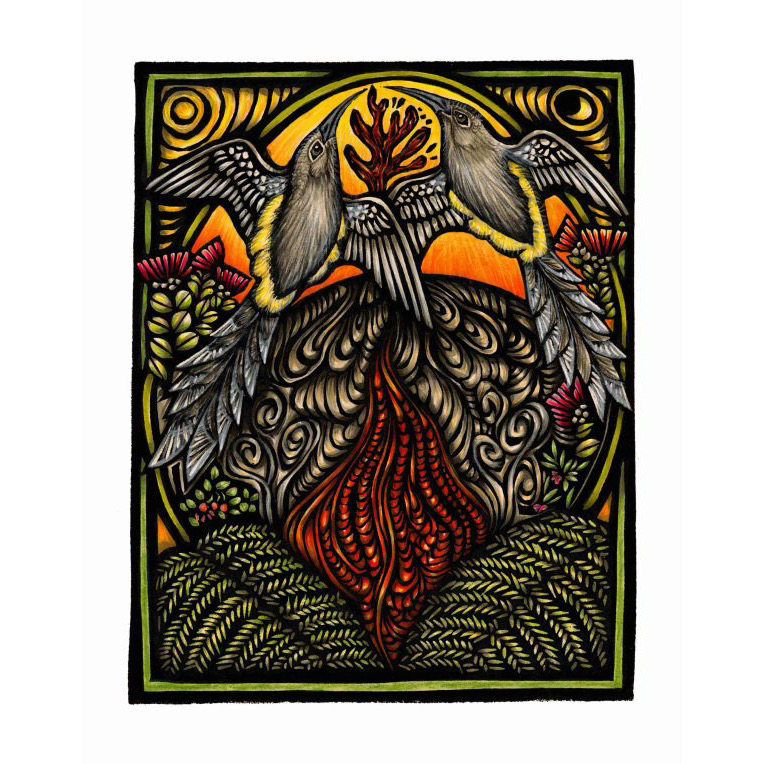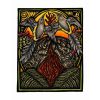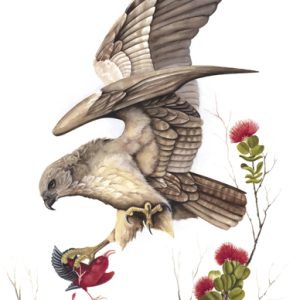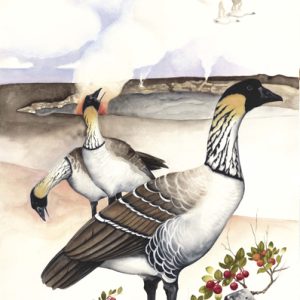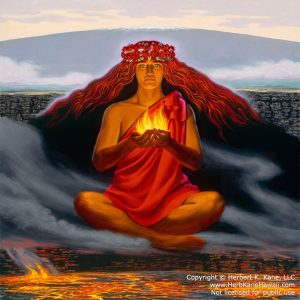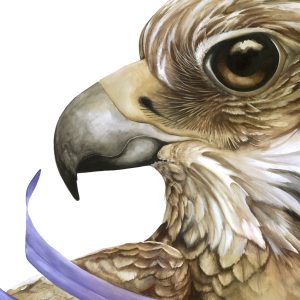The materials used for this giclée are all of the highest quality, printed on acid-free, museum quality, 100% cotton paper, using archival, pigment-based inks. Each piece is signed and numbered by the artist, backed by a white acid-free board, and packaged in a clear re-sealable art bag with a description and a certificate of authenticity on the back.
′Ō′ō Ancestors was created for the book, Manu, The Boy Who Loved Birds. The ‘ō‘ō are the oldest lineage of Hawaiian forest birds, dating back fourteen to seventeen million years. Most of the ‘ō‘ō birds were extinct before photography was invented. We know what the ‘ō‘ō looked like because of the artists who captured their beauty in paintings, and from museum collections of the birds. Forest birds were considered sacred by the Hawaiian people. The ‘ō‘ō birds were listed in the Kumulipo, the Hawaiian Creation Chant, recognized in Hawaiian cultural history as part of the fabric and origin of all creatures on earth. ′Ō′ō were also captured by Po‘e Kia Manu, feather hunters, for their valuable yellow feathers.
The ‘ō‘ō were songbirds, considered to be the finest singers of all Native Hawaiian birds. The male and female ‘ō‘ō were known to sing duets together. Their song was flute-like, and their call was a loud, “OH! OH!” like their name. ‘Ō‘ō were mostly nectar feeders of the forest canopy, foraging from sea level all the way up to the mountaintops, following the blooming flowers, especially their favorite- the lehua blossoms from the ‘ōhi‘a tree. They also ate insects that they found on branches, trunks, twigs, and leaves of living and dead trees. ‘Ō‘ō pollinated plants as they ate the nectar, so they helped the plants as the plants fed them!
This print depicts the ′Ō′ō bird which is now extinct. Extinction is forever. There are things we can do to help native species! Here are some ways we can make a difference: Learn about native species; Go on a bird-watching hike; Clean your boots, socks, and other clothing after hiking; Join/volunteer with a local wildlife organization; Plant native plants around your home; Keep your pets indoors, or fenced in your yard and never release unwanted pets into the wild; Stop the spread of mosquitoes and avian diseases- remove or cover things that collect rainwater, where mosquitoes can breed; Help to slow climate change by walking or taking the bus instead of driving. Turn off your house lights, television, and computer when not in use.
You can learn more about Caren Loebel-Fried and her artistic process by visiting her bio page here.


